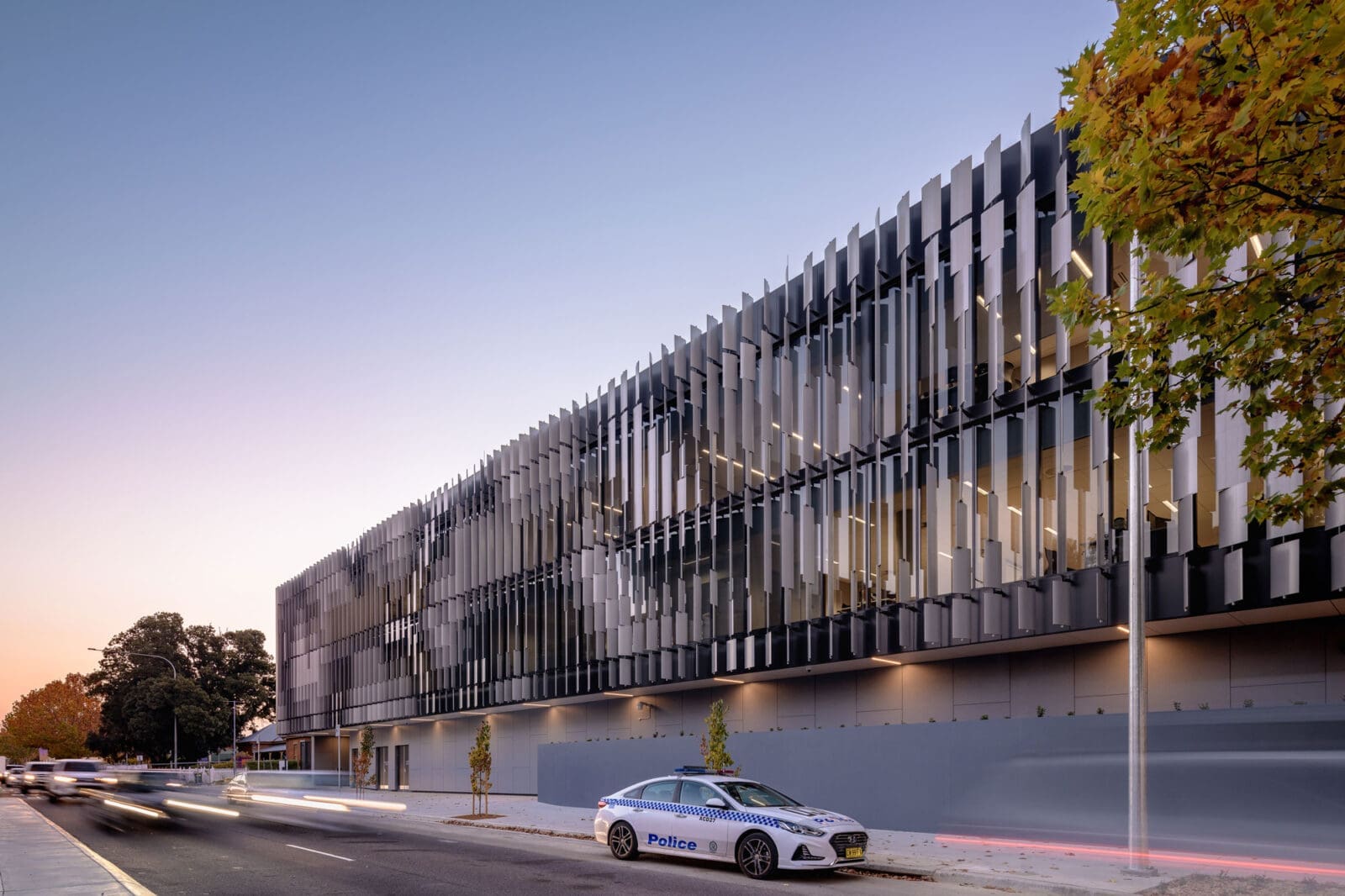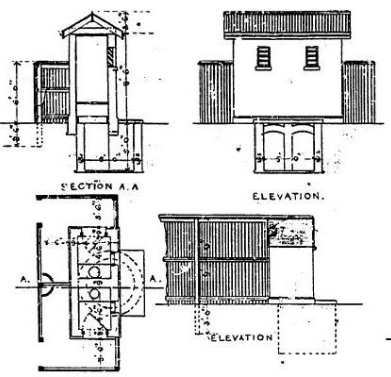Future Generation Police Stations
Presenting police stations as part of the community.
The police services have a responsibility to support communities and keep them safe. Historically, the buildings that support them have tended to take a back seat to court houses on the design front.
The Court was the image of ‘The Law’ in Australian Colonies, and considerable efforts and expense were accepted in the construction of imposing Court Houses in major cities and towns.
Meanwhile, police endured poor economic and social status by comparison, right through the 19th Century.
Today, a growth in population, economic influences and technological advancements have challenged our enforcement agencies, prompting an influx of new, innovative environments to work, collaborate and support frontline duties.
Police stations have generally been a modest form of building, recognisable as a small, single function residence fitted with a cell and office accommodation to support their purpose. As police presence and community engagement evolves, so too should these environments.
Multi-purpose spaces, for diverse needs
Since the 1920’s, single function police stations have been transforming to cater for the expansion of specialist departments. Public arrival spaces and staff facilities were traditionally basic and put under further pressure as the demand to grow outstretched resources.
Today, in recognition of the need, Police property groups have developed new standards and a workplace strategy to abolish rabbit warren fitouts and implement design guidelines that break down barriers, while promoting efficiency.
Modern Police Stations have become a multi-purpose policing centre, providing critical infrastructure for frontline policing with specialist support functions.
As designers, we group together to respond to new typologies in specialist and secure environments, embracing innovative solutions, government reinvention and alternate enforcement methods, with the motivation to improve policing effectiveness and public trust.
Contemporary facilities are being developed with an architectural intelligence that physically, and symbolically positions police stations at the centre of communities. They appear transparent, consider cultural and historical context, location and accessibility and convey the following key drivers:
Community Engagement
We’re seeing a shift in community perceptions of the police service being just a law enforcement agency. Traditional crime-fighting and enforcement-oriented policing in a bureaucratic command structure, is thankfully on its way out. Today, it’s all about encouraging partnerships between police and communities in a collaborative effort to improve relationships and minimise disorder.
This philosophical approach is being adopted in the physical sense. New police stations have become civic in presence and offer public access with minimised guard, increased public realm and spacious, light-filled community facilities, providing unification in an environment focussed on discretion, support and resolution.
Workplace wellbeing
It’s no secret people in police services work long hours in high pressure environments. It means addressing mental health and wellbeing is essential. Recognising the need to design a resilient workplace for the people, we ensure spaces for collaboration, respite and social activity.
Modern policing has reinvigorated the way in which police stations are designed, establishing building size and occupancy guides relevant to current and future demands. They include desire for efficiencies in spatial planning, use of innovative, durable and low-maintenance material, provision for adequate natural light, breakout areas and exterior landscaping to enhance environmental and operational efficiencies.
Altering old-school mentalities in support of closed work environments is challenging, however as we achieve a contemporary wave of open office policing environments, the cynics are conceding.
The consolidation of closed office environments, joint collaboration spaces and adjustable workpoints is promoting communication, boosting morale and leading to the creation of informal resting places crucial to employee health and productivity. It strikes the harmonised balance between teamwork and discretion required in an operational environment.
Operations and security
The enhanced capability of modern police stations will continually evolve to keep up with policing practices, delivering services to local communities by future-proofing support and matching technological and physical infrastructure to operational needs.
Fundamental to every design is planning for operational and secure functions, both as an independent environment and as part of the infrastructure of Justice and Emergency Services precincts.
Technological advancements mean we can create secure, intelligent and inspiring work environments that enable people to work effectively, offering improved conditions for frontline police and multidisciplinary teams, wherever they’re based.
¹ Australian Government/Public Safety and Law/Police and Crime Prevention; https://info.australia.gov.au/information-and-services/public-safety-and-law/police-and-crime-prevention/police-services-states




